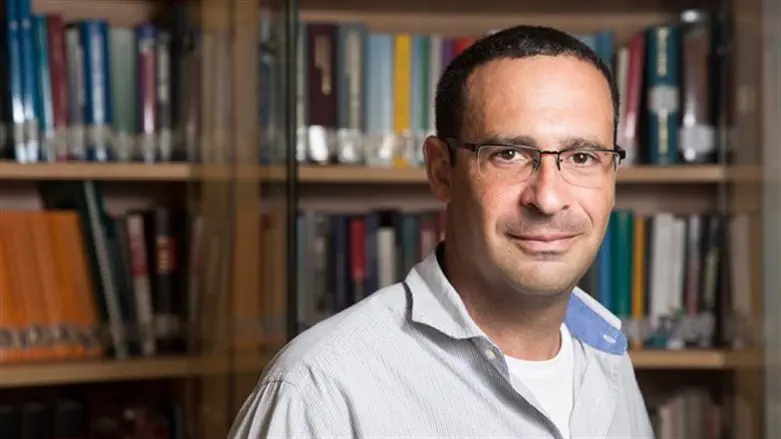
A recent event of no political importance: the last organized political remnant of the glorious Religious Zionist movement – the party known as “The Jewish Home” – merged with the “Religious Zionist (Tziyonut Datit)” Party, to form a unified political body named “The National Religious Party – Religious Zionism.” This union will change nothing politically, but it is of symbolic significance. The ideological stream whose political framework is called “Religious Zionist,” and which claims to represent the values of Religious Zionism, is swallowing up the party that once represented Religious Zionism in all its splendor. The political takeover of what was once a brand that symbolized unity, mamlachtiyut (“responsible statehood”), and religious and political moderation has been completed. The original brand has been supplanted by another ideological path. But the path and the values of Religious Zionism still exist, and we, who consider ourselves the mamlachti Religious Zionists, will continue to follow them.
A few days ago, I came across The Book of Religious Zionism, a thick two-volume work edited by the Religious Zionist leaders Yitzhak Rafael and Shlomo Zalman Shragai to mark the centennial of Religious Zionism. The book was published in 1977. Its yellowing pages tell the majestic story of Religious Zionism – a story replete with religious thought that accepts difference, with settlement throughout Eretz Israel, including within the Green Line, and with Israelis for whom the integrity of the people is no less important than the integrity of the Land.
This and many other such books express a Religious-Zionist philosophy rooted in a wide variety of spiritual sources; they depict a religious and rabbinical leadership inspired not exclusively by the writings of Rav Kook; and they communicate a desire to follow in the footsteps of Maimonides and other great Jewish thinkers who have made the spiritual assets of Western humanism an enriching and vital part of the spiritual world of the whole religious person.
It is this Religious Zionism that nested a large number of those Religious Zionists who, over the past few decades, have willingly shouldered the burden of the state. These are the Religious Zionists who are currently integrated within Israel’s security services, government ministries, academia, scientific research, settlement, industry, civil society organizations, media, and culture.
All those who studied Religious Zionism’s educational institutions (before some of those institutions went chardal or “Nationalist Haredi”), learned to think of us Religious Zionists as a bridge. A bridge between the spiritual and Torah worlds. In the course of a generations-long intellectual effort, they have been building an authentic Jewish worldview that does not give up on in-depth Torah study, on fulfilling its commandments, but also insists on connecting with intellectual worlds outside it. A bridge between the clashing values of the Israeli public arena and a way of life that is uncompromising but eschews extremes. A bridge between different identity groups in Israeli society whose extremes – the radical secular at one end and religious extremists at the other – have threatened to overwhelm it again and again.
Religious Zionism is not a compromise position. It is not only a bridge that mediates between worlds. It was and still is a bridgehead – the pioneers blazing a unique trail that successfully fuses opposing outlooks into a single worldview. It regards Ben-Gurion-style mamlachtiyut as a value on par with other important values. It views the existence of a complex and balanced Jewish-democratic identity as the mission of our generation, and the regal road toward the reestablishment and renewal of Jewish sovereignty in the Land of Israel. Religious Zionism is a movement to which racism and hatred of the other are completely alien, and which regards them as poisons capable of devastating any group they permeate.
An extremist ultranationalist-conservative stream politically represented by the Religious Zionist Party is the stilted mirror image of the above. This is a group whose leaders seek a regime based on ethnic segregation, a group whose vision of a Jewish state is a halakhic state built on the ruins of democratic values. A group whose defense policy aims to fulfill the Biblical injunction of “an eye for an eye” literally, contrary to thousands of years of rabbinical interpretation. A group for whom the integrity of the people is secondary to the ambitions of its worldview, and that tramples mamlachtiyut. A group for whom the Torah – the guiding light of many of its adherents – negates any other worldview, and for whom Western humanism is a golden calf to be crushed.
This is a cause of great uneasiness for many who consider themselves Religious Zionists. They want to differentiate themselves from the radical ideological movement that claims to represent them. They feel that the knitted kippa they once wore proudly has become, as a result of a takeover, a symbol of extremism. That it no longer represents them. This feeling is understandable.
But this is not a time to keep silent, and certainly not to give up. The values and tenets of mamlachti Religious Zionism are more relevant today than ever. Israeli society needs its true values, its moderation, and its balanced leadership, more today than ever. Abandoning the arena, leaving it to the extremes on both sides, is the real danger facing the State of Israel. The symbolic name “The National Religious Party – Religious Zionism” may have been appropriated, and part of the sector may have strayed from the path, but the values, and most of those who identify with them and with the path, are still unwilling to forfeit the essentials. And they will serve the people and the nation; they will continue to lead Israel alongside its other good sons and daughters.
Dr. Shuki Friedmanis Vice President of the Jewish People Policy Institute and a lecturer in law at the Peres Academic Center.
JPPS is against the judicial reform proposed by the Likud-led government. The views here are his own.